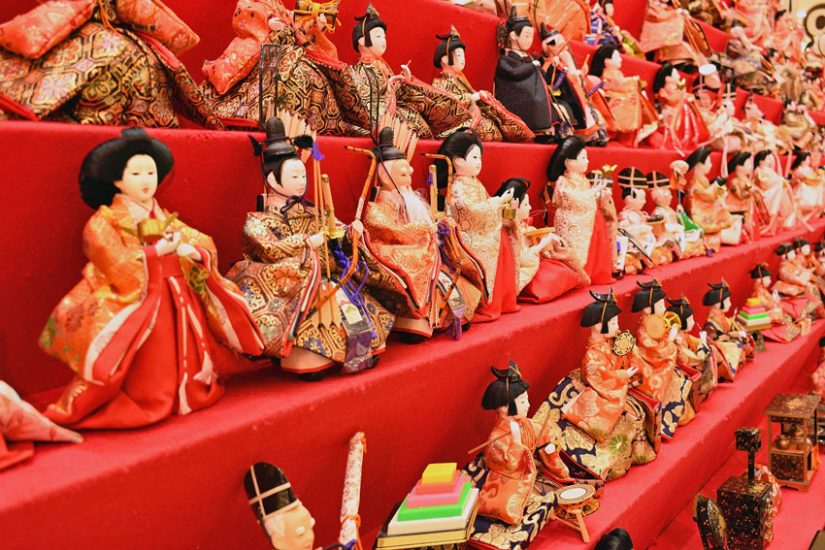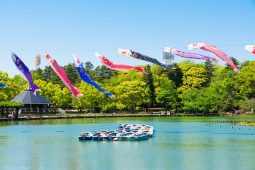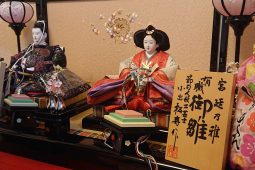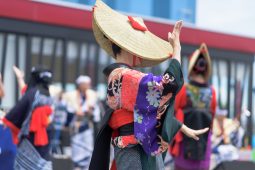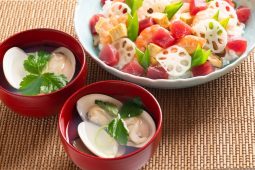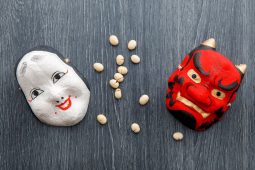Hinamatsuri (雛祭り) is a special festival which is held in Japan every year on March 3rd. This festival, which is known either as “Girl’s Day” or “Doll’s Day” in English, is a family celebration for young girls and is dedicated to their health and happiness. The main feature of Hina Matsuri is the setting up of a hina dan (雛壇), a tiered platform, covered in red cloth, on which ornamental dolls called hina ningyо̄ (雛人形) are displayed. In this article we will look at this festival’s origins, and introduce some popular locations for hina doll displays.
Hina Matsuri Traditions
Today’s Hina doll festival developed in the 17th century, but its origins go back much further. In the old lunar calendar the 3rd day of the 3rd month was a day of purification called Momo no Sekku (桃の節句 or the “Peach Festival”). This was the time when peach blossoms came in to bloom, and these flowers. An ancient belief held that dolls were magical avatars that could take on a person’s bad luck and carry it away. To this end a doll made of paper or straw would be placed beneath a girl’s pillow and during the Peach Festival such dolls would be put into little boats and floated down a river. As the dolls sailed away a girl’s misfortune and any illness would also be carried away, keeping her safe and healthy for another year… This tradition is called hina nagashi (雛流し” doll floating”) and is quite rare these days, but you can still see it at such locations as Mochigase town in Tottori City, and Awashima Shrine in Wakayama City.
Over time hina dolls developed from ritual objects into children’s toys. These days, however, a typical set of hina dolls consists of finely crafted items that are often passed down as family heirlooms and are certainly not meant to be played with! A modern hina doll display depicts a classical Heian era court with Emperor and Empress at the top and various courtiers arranged on the lower tiers. The fixed arrangement of these dolls, each placed in its proper place and station, is symbolic of a well-ordered family. This display must be taken down and put away promptly after the festival, for it is believed that leaving the dolls out too long will lead to a daughter’s late marriage.
Young girls will celebrate Hina Matsuri by having a party with lots of special foods. These include colorful rice crackers and rice cakes, a main dish of chirashi-zushi (raw seafood on a bed of rice). and shirozake (a sweet non-alcoholic sake for kids). There is also a clear clam soup called hamaguri-no-osuimono. The paired shells of the clams represent the hope that daughters can find a good husband and make a perfect pair.
Where to See Hina Doll Displays
You don’t have to visit a Japanese family home to see a Hina doll display. Around the time of the festival many hotels and department stores will set up their own hina doll displays, and some museums hold exhibitions of antique hina dolls too. In Tokyo’s Meguro ward, Hotel Gajoen hosts an impressive exhibition of historic doll collections from different prefectures every year. In Hino City, on the outskirts of Tokyo, Hino-shuku Honjin is a historic inn, now open as a museum, which has an annual Hina Matsuri display with several sets of hina dolls representing different time periods and styles. Yokohama Doll Museum also holds a regular exhibition of hina dolls every year, as does Kyoto National Museum before, during and after the doll festival. The Nagashibina Doll Museum in Mochigase town, Tottori City has a permanent exhibition of over 1,000 dolls and ornaments that you can view all year round.
A variant form of display is called tsurushibina (つるし雛 or “hanging dolls”). These are colorful cloth ornaments suspended on long strings and usually hung alongside regular hina doll displays. Typically these ornaments include such auspicious items as peaches, rabbits, wallets, and books. Various regions claim to have originated the tsurushibina tradition, but one rather strong claimant is the hot spring resort town of Inatori Onsen on the Izu Peninsula. Visit Inatori Onsen around the time of Hina Matsuri, and you are sure to see many bright and colorful displays at various locations around the town.


